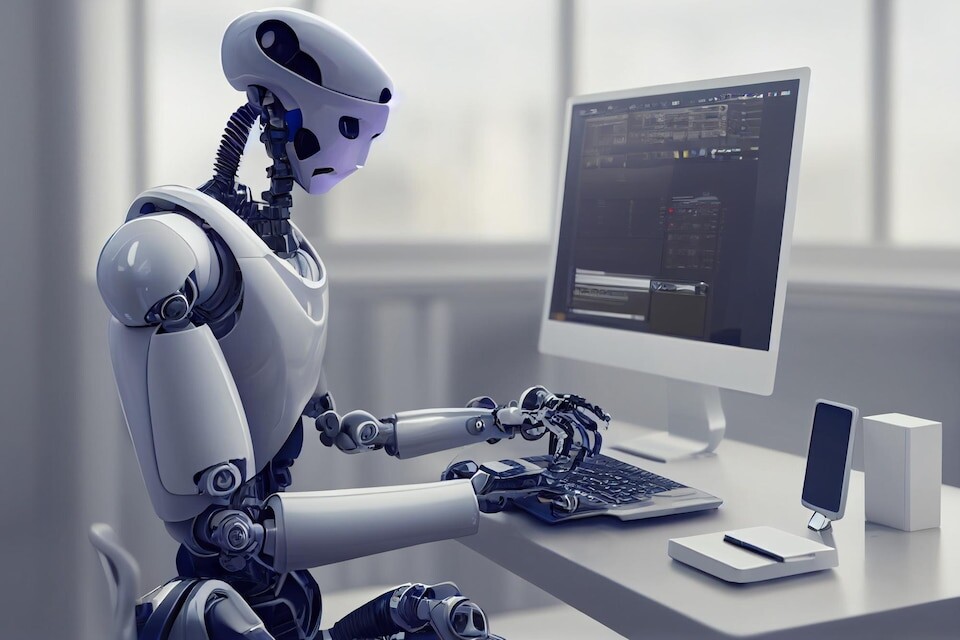
Robotics Technology: Shaping the Future of Automation
Introduction
In recent years, the field of robotics has made remarkable strides, transforming various industries and revolutionizing the way we live and work. From manufacturing and healthcare to agriculture and space exploration, robotics technology has emerged as a game-changer, enhancing efficiency, accuracy, and productivity. This article delves into the fascinating world of robotics, exploring its advancements, applications, and potential impact on society.
- The Evolution of Robotics
The origins of robotics can be traced back to ancient times, when humans developed simple mechanical devices and automated systems. However, it was not until the 20th century that significant advancements in electronics and computing paved the way for modern robotics. The birth of the programmable computer and the advent of artificial intelligence (AI) laid the foundation for the development of sophisticated robotic systems capable of sensing, processing information, and performing complex tasks.
- Types of robotics
Robotic systems can be broadly classified into four main categories:
a) Industrial Robotics: Industrial robots are extensively used in manufacturing processes to perform repetitive tasks with precision and speed. These robots are equipped with advanced sensors and programmed to carry out tasks such as assembly, welding, painting, and material handling.
b) Service Robotics: Service robots are designed to interact with humans and assist in various domains, including healthcare, hospitality, and customer service. These robots can perform tasks such as caregiving, cleaning, delivery, and even companionship for the elderly.
c) Medical Robotics: Medical robots have revolutionised the field of healthcare by enabling minimally invasive surgeries, precise diagnostics, and rehabilitation support. Surgical robots, for instance, assist surgeons in performing complex procedures with enhanced precision, leading to reduced risks and faster recovery times.
d) Autonomous Robotics: Autonomous robots operate independently, without human intervention. They utilise advanced algorithms and sensors to perceive and navigate their environment, making them suitable for applications such as exploration, agriculture, and transportation.
- Applications of Robotics Technology
a) Manufacturing and Automation: The manufacturing industry has been at the forefront of robotics adoption. Robotic arms and automated assembly lines have significantly improved efficiency, quality control, and production output. With advancements in machine learning and computer vision, robots are now capable of adapting to changing production requirements, leading to increased flexibility and cost-effectiveness.
b) Healthcare and Rehabilitation: Robots are playing a crucial role in healthcare, assisting doctors and nurses in various tasks. Surgical robots enable minimally invasive procedures, reducing trauma for patients. Additionally, robotic exoskeletons aid in physical therapy and rehabilitation, helping patients regain mobility and independence.
c) Agriculture and Farming: Robots are being deployed in agriculture to automate labour-intensive tasks such as planting, harvesting, and monitoring crop health. With the integration of AI and data analytics, robots can optimise resource usage, detect diseases, and enhance yield, leading to sustainable and efficient farming practises.
d) Space Exploration and Research: Robots have been instrumental in space exploration, allowing us to gather information from distant and inhospitable environments. Robotic rovers like NASA's Curiosity and Perseverance have explored the surface of Mars, providing valuable insights into the planet's geology and potential for human habitation.
- Challenges and Ethical Considerations
While robotics technology brings numerous benefits, it also poses challenges and ethical considerations that need to be addressed. One significant concern is the potential displacement of human workers as automation increases. As robots take over repetitive tasks, it becomes crucial to reskill and upskill the workforce to ensure their continued employability.
Another aspect is the ethical use of AI in robotics. As robots become more intelligent and capable of making decisions, questions arise regarding accountability, privacy, and the potential for bias. It is essential to establish guidelines and regulations to ensure the responsible development and deployment of robotics technology.
- Future Prospects and Impact
The future of robotics holds tremendous potential for transformative change across various sectors. Advancements in AI, machine learning, and sensor technology will enable robots to become even more versatile, adaptive, and capable of interacting seamlessly with humans. This could lead to the emergence of personal assistant robots, robotic companions, and further integration of robots into everyday life.
Robotics technology is poised to revolutionize industries, drive economic growth, and enhance the quality of life. It will create new job opportunities, enable safer and more efficient work environments, and contribute to advancements in fields such as healthcare, agriculture, and exploration.
Conclusion
The rise of robotics technology marks a pivotal moment in human history, where machines are becoming intelligent collaborators in our pursuit of progress. From factories to hospitals, fields to outer space, robots are reshaping industries and transforming the way we live and work. As we continue to embrace the potential of robotics, it is crucial to navigate the challenges and ethical considerations, ensuring a future where humans and robots coexist harmoniously, unlocking a world of endless possibilities.